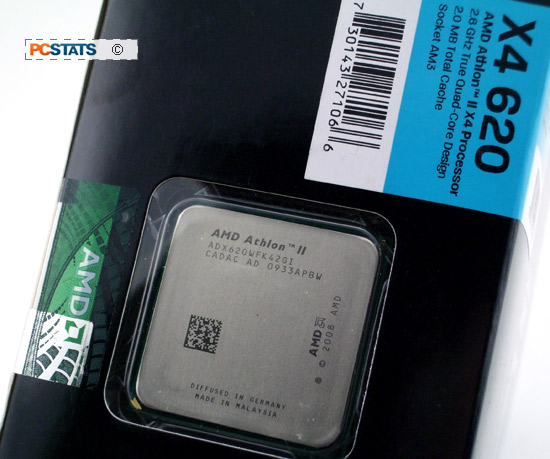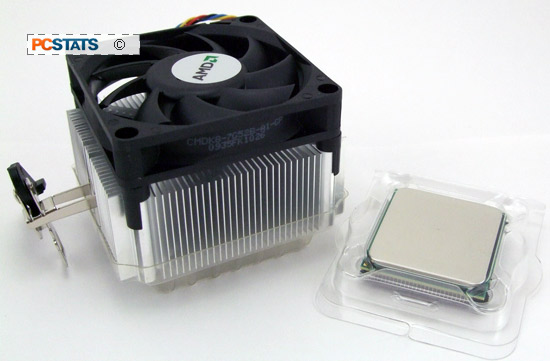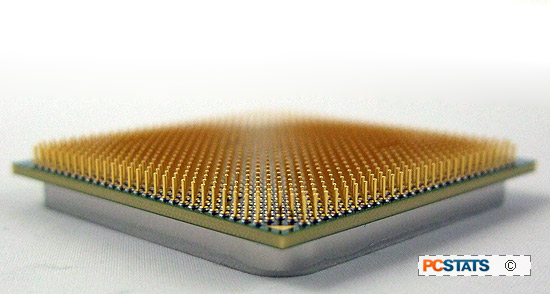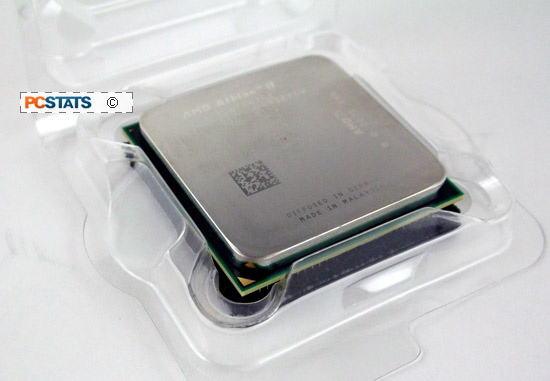Installing an AMD Socket AM3 processor into a motherboard is not
a difficult task, but if you've never done it before some friendly guidance is usually a good
idea. Most users tend to encounter problems attaching the AMD heatsink correctly or are unsure
about which CPU is compatible with each different socket version. Other times, novice users will
be unaware of how to orient the CPU in the socket properly so it's keyed
correctly and fits in.
When it comes time to upgrade an old AMD processor with a new chip, the
number one issue PCSTATS hears about is damaged electrical pins
on the underside of the CPU. Nine times out of ten this
happens by pulling too strongly when the heatsink refuses to let
go of the CPU... Trust me, there's a right way and an "I didn't read the
instructions" way to go about installing and removing socket AM3 AMD
processors.
To help novice computer users who
aren't entirely confident they can install an AMD CPU into
a fresh motherboard, or upgrade an older socket AM3 processor, PCSTATS put
together this illustrated Beginners Guide. If you are planning on building a AMD based computer
anytime soon, bookmark this article for future reference
The AMD Processor and Socket AM3

AMD socket AM3 processors have 941 little
gold pins on the underside of the processor which make electrical
contact with an equal number of mating pin-holes in the processor
socket. When handling the processor, never touch the electrical pins. These pins can be damaged
by the oils on your fingers, bent out of shape or broken off by careless handling.

In very rare circumstances,
a static electric charge may fry the integrated circuit at the heart of the processor package.

The correct way to hold a processor is by the edges of the green PCB
so your fingers do not touch the delicate gold pins. Incidently, this is also the proper
way to hold a Printed Circuit Board (PCB). Occasionally, motherboard and videocard capacitors will continue to maintain a charge after the device is de-energized - the PCB is non-conductive so it
can save you from a potentially nasty shock.
Generally speaking it's best to leave the CPU in its protective carrier until the
moment you're ready to install it. Otherwise place the CPU on bit of antistatic foam or a clean sheet of paper until you're ready to
install the chip into the motherboard socket.

As you proceed through this PCSTATS Beginners Guide, remember that it's extremely important the processor be installed slowly, carefully
and vertically into the socket, and removed the same way. Any careless
handling will damage the electrical pins and may leave you with a useless high tech
paperweight.
PCSTATS will now describe the
step by step process of installing an AMD socket AM3 processor correctly into a socket AM3 motherboard. It's not
the hardest thing in the world, but it pays to be careful and follow a predetermined set of steps if you've never attempted this before.
There are one or two tricks to getting chip into and out of the CPU socket without damaging anything, so let's begin...

